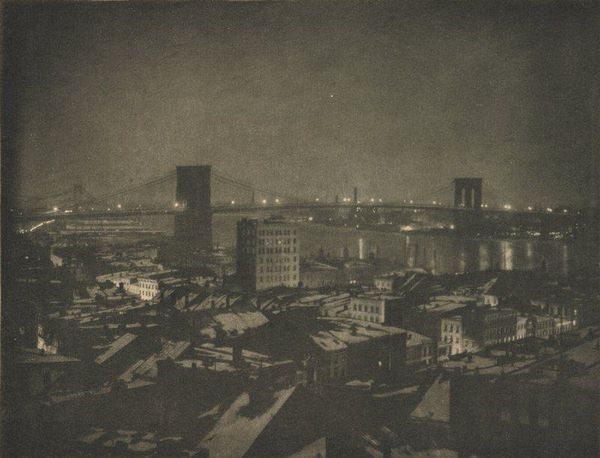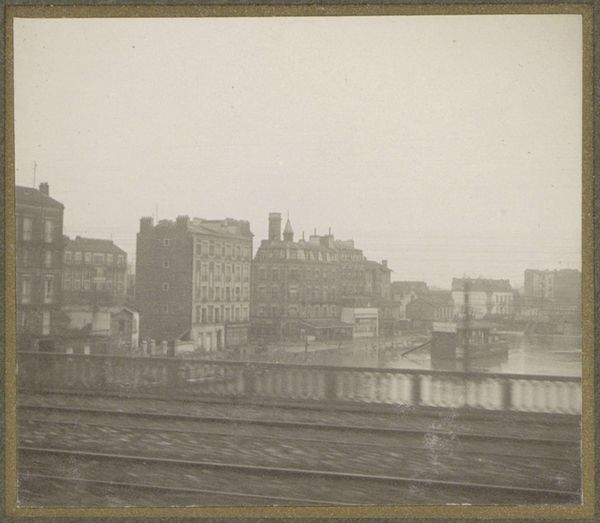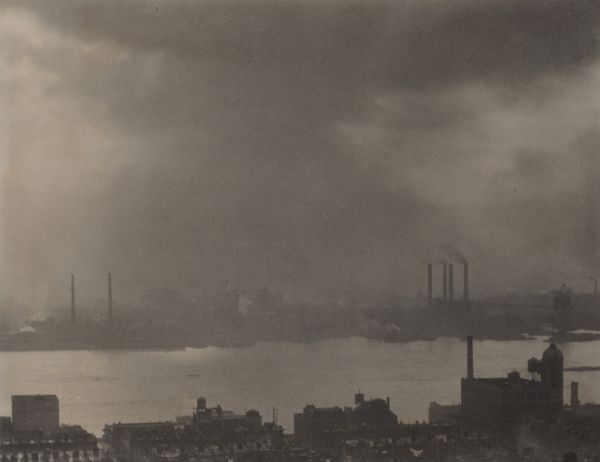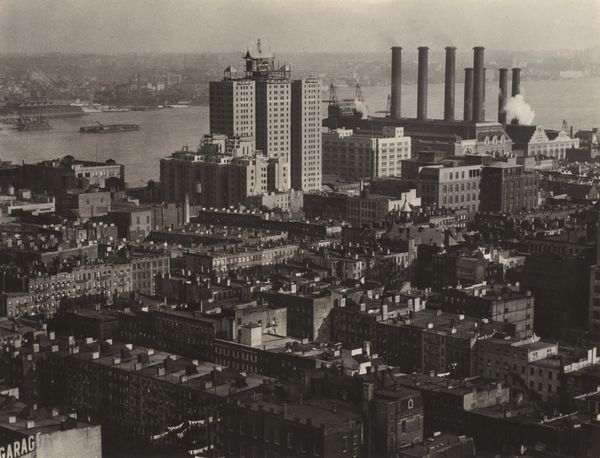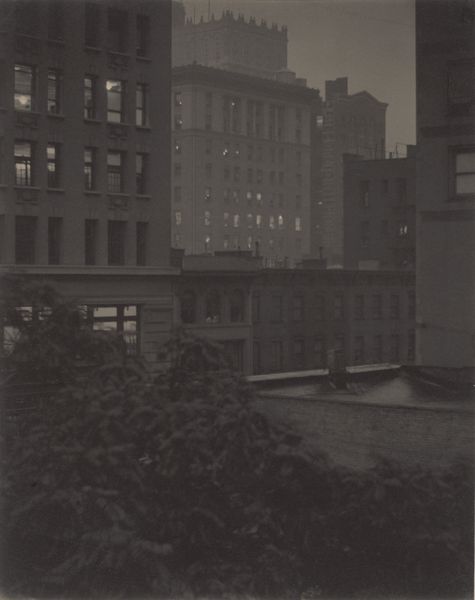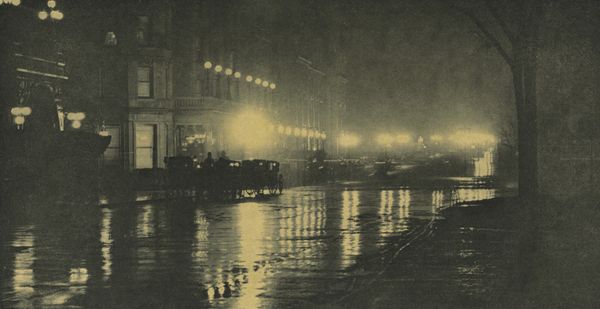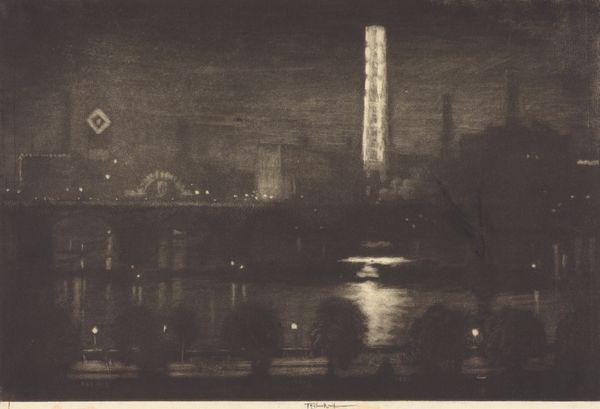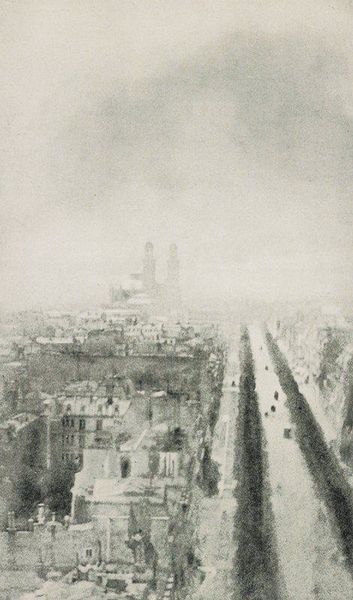
photogravure, print, photography, gelatin-silver-print
#
photogravure
#
black and white photography
#
pictorialism
# print
#
landscape
#
outdoor photograph
#
archive photography
#
photography
#
gelatin-silver-print
#
monochrome photography
#
united-states
#
cityscape
#
monochrome
Dimensions: 4 3/8 x 7 3/8 in. (11.11 x 18.73 cm) (image)
Copyright: No Copyright - United States
Curator: What a somber mood! A nocturne in grayscale, almost oppressive. Editor: Here we have "The Bridge" by John Francis Strauss, a photogravure dating to the 19th-20th century. It’s a stunning example of Pictorialism currently held in the Minneapolis Institute of Art collection. Curator: The composition is quite interesting. The foreground is filled with densely packed buildings, almost aggressively angled, leading to a somewhat obscured middle ground of water reflecting what I assume are electric lights, with the bridge acting as a tenuous link in the background. Editor: Considering the time, this work provides interesting insight into the modernization and urbanization of America at the turn of the century. The imposing bridge looms over the crowded cityscape, indicative of the growing influence of industrial progress on communities. The contrast is stark. Curator: Precisely, it is about opposing masses; the bridge as structure of industry balanced by what seems like disorganized domestic space. There's a subtle tension arising between the architectural details and the softened focus. A negotiation between sharpness and blur seems to act almost as a way to temper the city itself. Editor: It mirrors debates of the time – tradition versus modernity. The photograph was most likely intentionally softened to emulate painting, demonstrating photography’s legitimacy within established art practices of the era. This photo pushes back at photography as merely documentation. Curator: Yes, consider the medium: the gelatin silver print really adds a layer of depth to the image that can easily go unnoticed. The tactile quality draws attention to how light reacts with texture. The very surface embodies this soft/sharp negotiation. Editor: Furthermore, images like these shaped the collective imagination, imbuing industrial achievements with symbolic value and establishing a sense of national identity connected to urban expansion and engineering feats. It goes beyond the purely aesthetic to comment on a sense of nationhood. Curator: The piece presents its subject using carefully structured, yet seemingly unstable organization; so I find I cannot agree that the work provides firm answers, nor presents the bridge necessarily as celebratory achievement. The emotional density is high, like a clouded dream hovering over city blocks. Editor: Well, regardless, its continued ability to spark diverse readings proves its value as a piece of material culture. It serves as a critical and poignant snapshot of the time, reflecting societal progress and tensions. Curator: Indeed. It reminds us that aesthetic appreciation involves seeing beyond the surface.
Comments
No comments
Be the first to comment and join the conversation on the ultimate creative platform.
